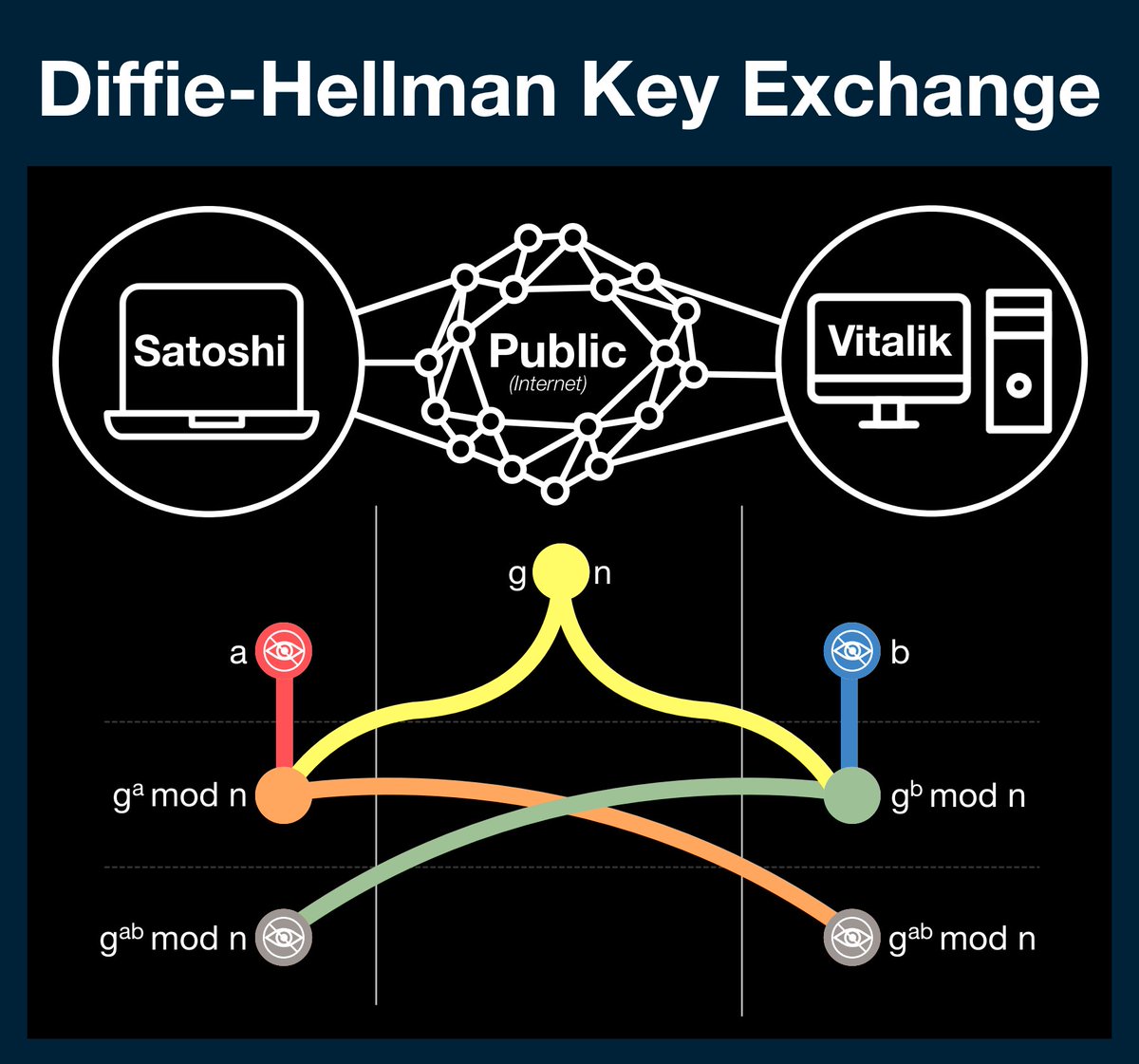
¶ Diffie-Hellman Key Exchange
¶ Prerequisites
¶ Modular Arithmetic
When you divide two integers, sometimes the result is not an integer (eg has a reminder). Modular arithmetic is a branch of math that is focused on the reminder.
The modulo operator (written as "mod") is the operation that finds the remainder.
- 10 / 3 = 3 with a remainder of 1 = 10 mod 3 = 1
- 14 / 6 = 2 with a remainder of 2 = 14 mod 6 = 2
- 3 / 10 = 0 with a remainder of 3 = 3 mod 10 = 3
Imagine a clock being mod 12.
¶ Communicating in Public
Let's say you need to communicate sensitive data across a public channel. If you know other people can read your data, you might decide to cryptographically encode it.
Encoding is the process of transforming the original data into an undecipherable (but reversible) form.
Encoding is only useful in one condition: if (ONLY) the intended recipient can decode the message, transforming it back into its original form.
If we can pull this off, we can securely share sensitive data even while broadcasting it to the entire world.
In order to do this, we use a cryptographic algorithm.
A cryptographic algorithm receives a message and an encryption key. If the message is not encrypted, the algorithm will encode it. If the message is encrypted, the algorithm will decode it.
We will just take the cryptographic algorithm for granted; you can just treat it like a black box. We are interested in the encryption key.
More specifically, we are interested in understanding how to create a key.
¶ Generating a Key
Due to the nature of a cryptographic algorithm, anyone with the encryption key is able to decode the message. If you don't have a private channel to create/agree upon the key, how can do it in the open?
How do you establish a shared secret in public?
Our answer comes from over 40 years ago by Whitfield Diffie and Martin Hellman: Diffie-Hellman Key Exchange.
This scheme was the first method of creating a shared secret that didn't require the literal physical exchange of encryption keys (via paper, disk, etc).
¶ Mixing Paint

Diffie-Hellman has a classic metaphor that is very helpful: mixing paint. In the metaphor, the goal is to create a secret color that only the participants know.
¶ Phase 1
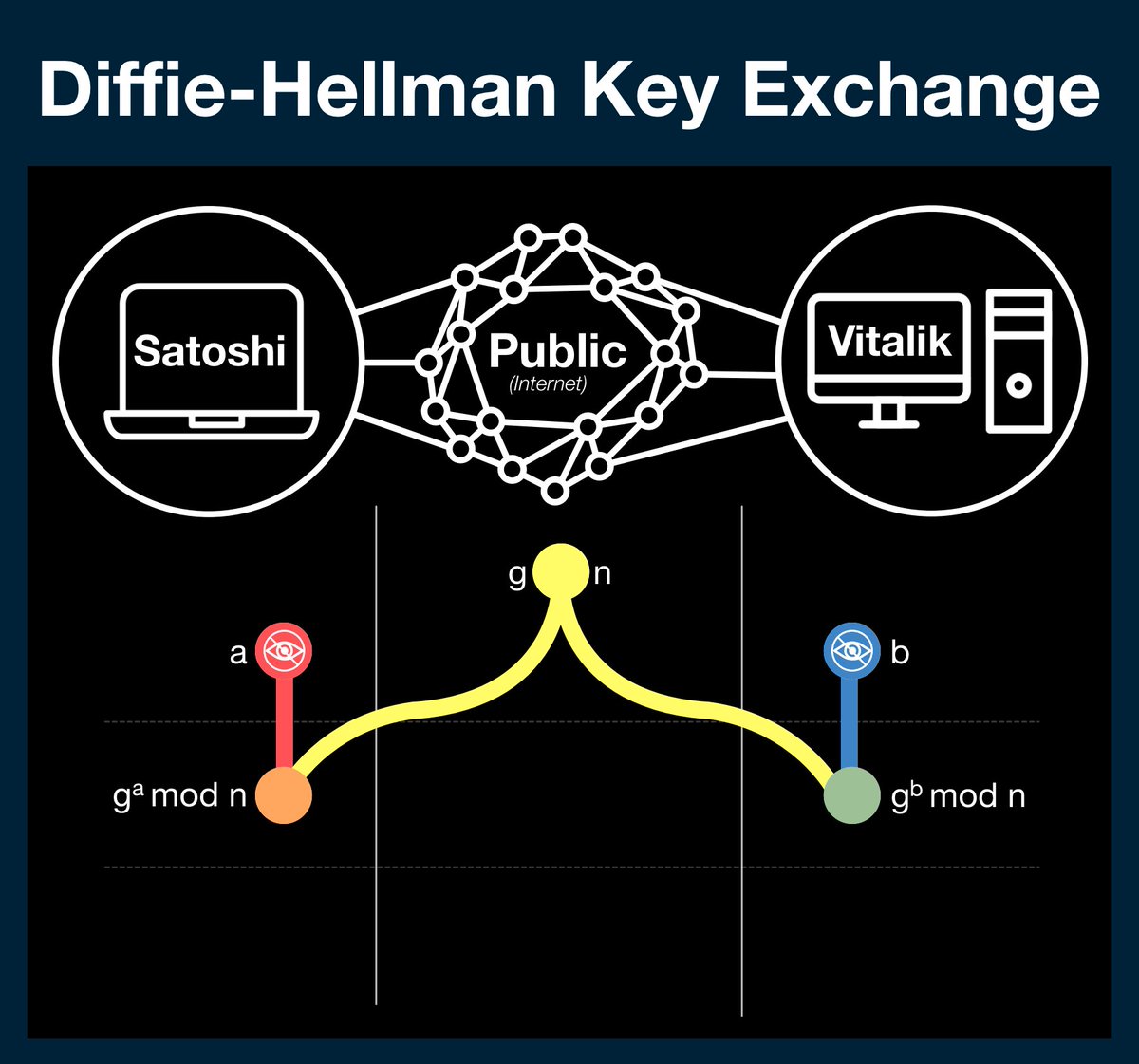
Diffie-Hellman begins with two parties (Satoshi, Vitalik), a public data channel and two publicly available numbers: g and n (yellow).
g and n are either agreed upon before hand, using some industry standard, or are agreed upon in public before the process starts.
Both parties have a secret number (Satoshi - a, red) (Vitalik - b, blue).
These numbers are the keys to every message sent by their owner; their privacy is paramount.
To begin the process, both parties import the publicly available data (g and n - yellow) and apply their secret number.
The formula below is a little scary; let me break it down. All we are doing is multiplying g by itself a/b times and then applying mod n.
¶ Example
 |
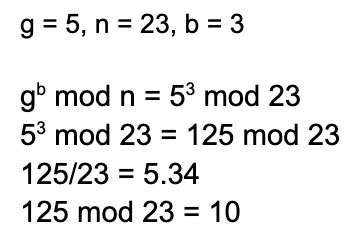 |
¶ Phase 2
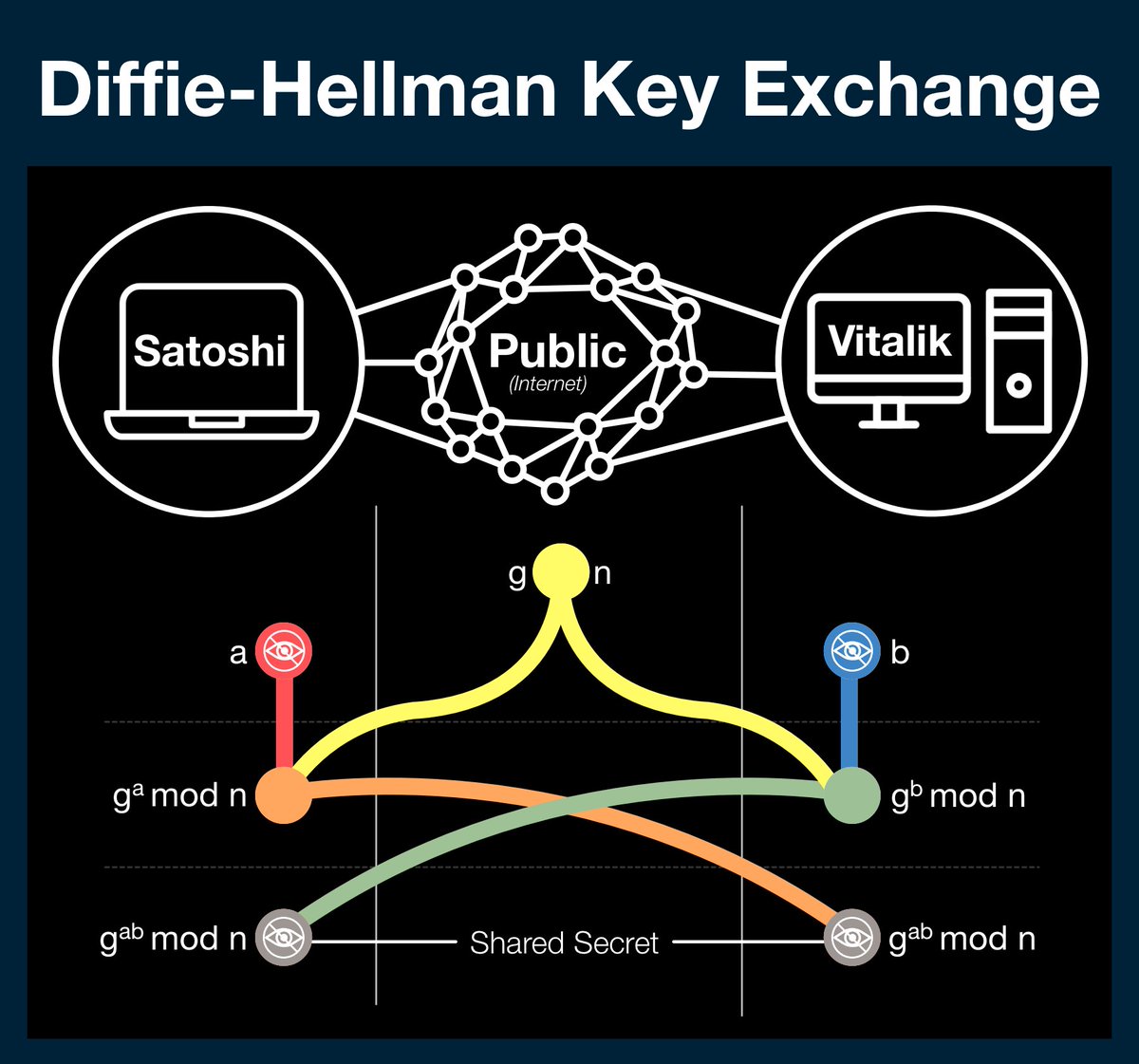
Next, both parties will send this new value back across the public channel.
At this point both values become public, however no observer can recover the original data. The critical piece is the modulo function.
¶ Example
(these need to be fixed)
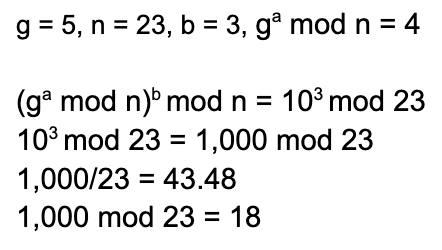 |
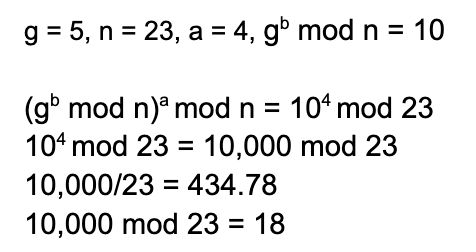 |
¶ Phase 3
Once both parties have this intermediate value, they can repeat the process they used to make it: multiply the new value a/b times and take the remainder when you divide by n.
Here's where the magic happens: Now you both have the same number; a number no one else knows.
¶ One Way Functions
¶ Clock
Let's think about a clock as a system with mod 12.
Just because you know we start at 4 (g) and where we end at 6 (g^a mod n) doesn't give you enough information to know how long we lasted: 2 hours? 14 hours? 26 hours?
g^a mod n is the same problem!
¶ Discrete Logarithm Problem
It turns out there isn't a great way to do this other to just start guessing.
Our examples are using tiny numbers, but in practice these values would be hundreds of digits long.
Guessing is not just difficult, its nearly impossible (although that's becoming less true).
¶ A Public Secret
And so, after you complete the Diffie-Hellman key exchange process, both parties have a shared secret. They both can be confident that they (and only they) will the only ones able to read messages that use that value as an encryption key.
A public secret!
¶ Resources
Further Reading/Watching
Source Material - Twitter Link
Source Material - PDF